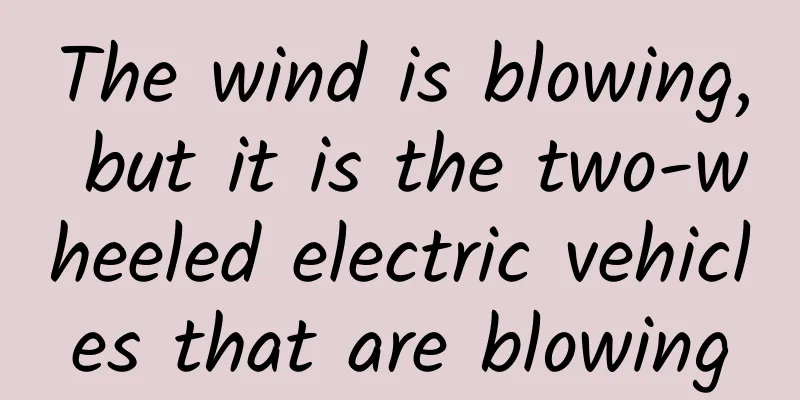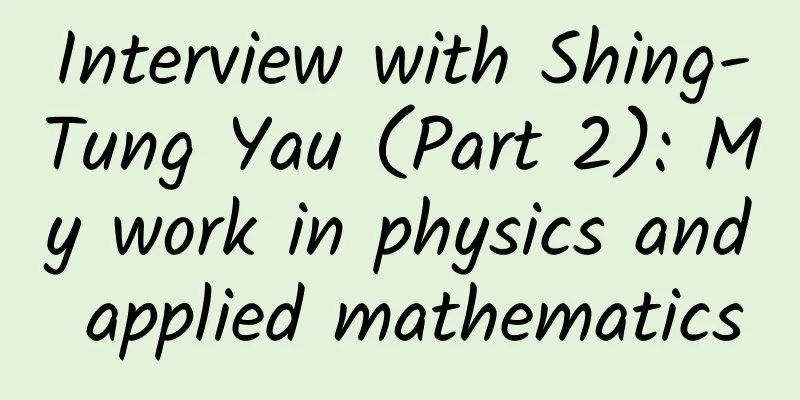The wind is blowing, but it is the two-wheeled electric vehicles that are blowing

|
To learn to fly, you must first learn to walk. When Xiaomi, LeEco, and Youxia Motors released information in advance and made gestures to enter the electric vehicle market, Li Yinan suddenly announced on Weibo that he would start a business to make two-wheeled electric vehicles. Instead of making good investments, the former technical genius has come out of retirement in his middle age. He did not choose fashionable electric cars, but such an inconspicuous traditional industry. This seems to be a well-thought-out move. According to other media reports, the product team was established as early as last year and is now approaching the mass production stage. This Huawei style of releasing products first and then boasting about them is obviously well prepared. Why do we make two-wheeled electric locomotives instead of electric cars? Obviously, there is no hope of overcoming the two major obstacles to the popularization of electric vehicles - high prices and range anxiety. The high price is not a big problem. History has proven time and again that with the prosperity of the industry and the advancement of technology, any high-tech product will one day be accessible to ordinary people. Tesla, which had a total sales volume of only 22,300 vehicles in 2013, has become a company with a market value of 20 billion US dollars. Even Apple has formed a rumored super-luxury team to build cars. The benefit of the heated market is that the industry has finally begun to seriously study the issue of popularizing electric vehicles. For example, the commissioning of the Tesla and Panasonic super battery factory is expected to quickly reduce the cost of electric vehicles (the battery of the Tesla Model S accounts for 40-50% of the total cost of the vehicle). Range anxiety is a bit unsolvable, because the construction and maintenance costs of charging piles at a certain density are incredibly high, and commercially unfeasible. Question 1: How many resources are needed to ensure that charging stations are actually put into use and electric vehicles can be used normally? More than two months ago, there was news that the charging equipment on the Beijing-Shanghai Expressway had been installed and the entire line was open to traffic, so people could drive from Beijing to Shanghai. So, Autohome organized a test and took two electric cars to make a trip. But when they drove out, they found that the line had not started operating yet and could not be charged, so they had to tow the electric cars back... The most anxious thing for car owners really happened. It is so difficult to actually put charging piles into use that even the news cannot be trusted. Moreover, charging piles are themselves a controversial topic for electric vehicle charging. Compared with ordinary sockets, charging piles require huge investment, especially high-speed charging piles, which cost hundreds of thousands or even millions. In addition to charging piles, a charging station also requires land and various equipment, and the total price is staggeringly high. In addition to the high cost of charging piles, another problem with charging piles is the standard. According to the national standard GB/T 20234 formulated in 2011, the national standard interface of charging piles is divided into two types: DC interface and AC interface. At present, most charging pile manufacturers mainly promote DC interfaces, and only BYD mainly promotes AC interfaces. The national standard stipulates the communication protocol between electric vehicles and charging equipment, but some places and companies will add some of their own requirements to the national standard. For example, some companies will first use pulse current to test charging, and then use direct current. Because companies always want to protect their own interests, the final result of the game is that each company produces charging piles that are compatible with their own electric vehicles. After Tesla entered China, the charging problem also gave it a headache. Because Tesla implements the US standard, the US standard and the Chinese standard have different connectors and are not compatible with each other. And Tesla cannot make models that meet Chinese standards. This charging station on the Beijing-Shanghai Expressway claims to support charging of all electric vehicles that meet Chinese standards. But it is hard to say what cars can actually be charged, and whether Tesla can be charged. Autohome brought Tesla and Morning Breeze for this test. Not to mention that the service was not activated, even if it was activated, it is hard to say whether Tesla can be charged. Problem 2: Even if the problem of charging piles is solved, the logic of using four-wheel electric vehicles may be problematic from the beginning. In China, it is more suitable to use pure electric power for short-distance driving in the city and plug-in power for long-distance driving, because the efficiency of electric vehicles is the lowest under long-distance high-speed driving conditions. The biggest advantage of electric vehicles over fuel vehicles is the stop-and-go driving conditions in the city. The power required by electric vehicles at high speeds will increase greatly, and the cruising range will be greatly reduced. Ordinary fuel vehicles are more fuel-efficient under high-speed conditions. Tesla's official website describes different powers at different speeds, reminding users to pay attention to the power when driving at high speeds to avoid the tragedy of trailers. Pure electric vehicles have range anxiety when driving long distances, because the power figure is an estimate. You don't know whether you can reach the next charging station, so you have to leave enough margin, which leads to frequent charging. The charging time of electric vehicles is too long. Even if it is the so-called 30-minute full charge on the Beijing-Shanghai Expressway, it is unbearable to wait 30 minutes for 100 kilometers (equivalent to driving for 1 hour and stopping for half an hour). And this is the case without queuing. If there is only a queue, even if there is only one car in front of you, you have to wait 30 minutes longer. If there are three or five cars, then... Under the current circumstances, building fast charging stations on highways to support new energy vehicles is a thankless task. According to an insider of the State Grid, there are almost no profitable projects among the more than 400 charging stations that have been built, and the entire line is in a loss-making state; the Southern Power Grid branch also stated that the 7 charging stations it has built and operated in Shenzhen have an annual loss of 13 million yuan. It is hard to say whether these charging stations on highways can recover their costs, let alone the daily maintenance costs. 50 charging stations would cost hundreds of millions of dollars. It is really speechless to make such a decision. The current situation of electric vehicles may be a dead end, because the idea was wrong from the beginning. According to the verdict of the Bible "Zero to One": the beginning is muddled and there is no hope. In China, even with companies like BYD, active guidance and support from the national policy level, and the media's crazy pursuit of Tesla, Tesla's performance soon declined after the initial "first trial period", and the number of applications for electric vehicle licenses in Beijing that are free of lottery is less than half of the expected number. . Some people may wonder, since electric cars are so "unreliable" at this stage, why are so many people eager to try them? Tesla, which had no foundation at all, has become a leader in just a few years, which shows that the threshold of this industry is not high. The reason is that electric motor braking is much simpler and more controllable than engine braking. Electric motors have more design space than fuel engines, are less difficult to develop, and parts are less dependent on the complete supply chain. Therefore, companies can spend more time and effort on car networking, autonomous driving, digital display, and optimized driving experience. The current unreliability of electric vehicles, in my opinion, is that the technological evolution has not adapted to the precise product form. Why must electric vehicles follow the "standardized design" of fuel vehicles? Can't I just start over? Just like the iPhone's subversion of Nokia's Symbian, with completely different design concepts and usage methods, from hardware to software, the complete intelligent system equipment subverts the embedded system equipment. Electric vehicles had a messy start and there was no hope for recovery. Who would change the "start" first, such as changing four wheels to two wheels? When the big guys were all making electric vehicles, Li Yinan first made two-wheeled electric motorcycles. Environmental protection, lower prices, simplified charging, and less difficult R&D and production seem to be more in line with China's national conditions. Moreover, as a traditional industry, two-wheeled electric vehicles have hardly changed, and are still in the era of family-owned enterprises, offline store dealers promoting, and celebrities bombarding advertisements on TV. In addition, product prices are not transparent, after-sales service is extremely poor, and intermediate costs are high. This is not a great opportunity for "Internet thinking" to transform traditional industries. Just like the Gogoro made by the team from HTC that amazed the CES exhibition, Li Yinan, the former technical genius and the legendary figure of Huawei with a strong technological foresight, must have smelled such an opportunity. What kind of qualitative change will the two-wheeled electric vehicles that have been transformed by the Internet and equipped with "intelligent" wings produce? It is said that electric cars are the future. They are environmentally friendly and much cheaper to charge than gasoline. They are the future. However, when two-wheeled electric cars are smarter, cheaper and provide a better experience, it will be the turn of electric cars. Before big shocks and disruptions come, transitions and gradual changes will be witnessed first. As a winner of Toutiao's Qingyun Plan and Baijiahao's Bai+ Plan, the 2019 Baidu Digital Author of the Year, the Baijiahao's Most Popular Author in the Technology Field, the 2019 Sogou Technology and Culture Author, and the 2021 Baijiahao Quarterly Influential Creator, he has won many awards, including the 2013 Sohu Best Industry Media Person, the 2015 China New Media Entrepreneurship Competition Beijing Third Place, the 2015 Guangmang Experience Award, the 2015 China New Media Entrepreneurship Competition Finals Third Place, and the 2018 Baidu Dynamic Annual Powerful Celebrity. |
<<: Don’t think you can start a business just by drinking some chicken soup from BAT
>>: How to develop the internet of white goods
Recommend
Online and offline framework for second-hand car live broadcast room!
In the traditional search for used car sources, u...
3 directions to grasp the battle design of war SLG games
[[149432]] 1. Overview With the popularity of Gam...
User growth fission method!
“Create 50 communities in 48 hours at zero cost” ...
"Rabbits are so cute, how can we eat them!!" Australians want to cry after hearing this...
"Little white rabbit, so white, with two ear...
Many netizens "show off their backs" during the dog days of summer. Some benefited while others were hurt. Experts gave the following suggestions...
Recently, with the arrival of the dog days of sum...
Don't brag blindly! Here comes a self-test table for eating spicy food... How many levels can you stick to?
Among the five flavors in daily life, spicy food ...
Why do you always get cheated when you are so smart? Uncover the psychological secrets behind telecom fraud
In recent years, "telecom fraud" has be...
How does QR code marketing increase the scanning rate?
In the future, data will serve as a factor of pro...
Long Juan's essential image management course for sophisticated women
Through 20 lessons of "Essential Image Manag...
How does Baidu bidding respond to the reduction in promotional spaces?
Introduction Recently, some changes have taken pl...
Learn how to use the AARRR model to achieve user growth in one article
" User growth is essentially a precise, low-...
The closed loop of Douyin mini program capabilities has been completed!
After half a year of silence, the Douyin Mini Pro...
Do you really understand real-time computing?
What is real-time computing? Please see the foll...
Quickly understand Swift's classes and structures based on OC
First of all, I found that when writing Swift cod...









